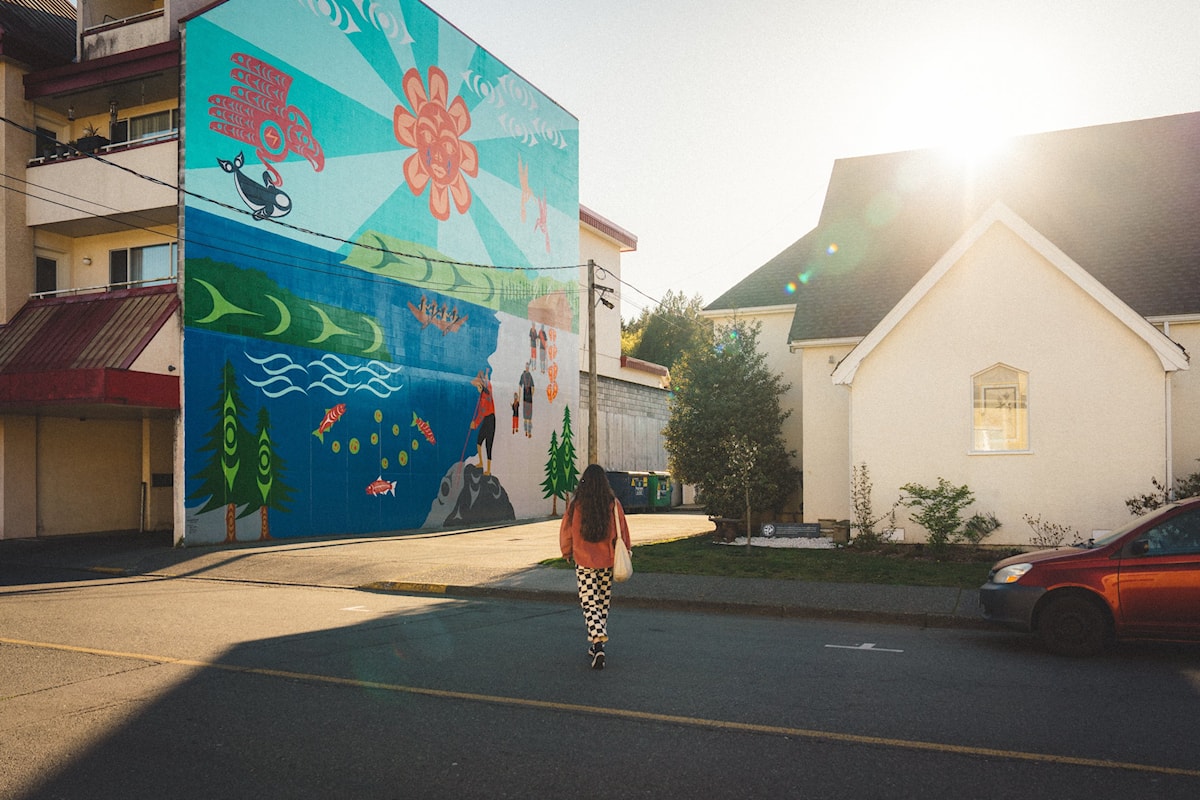
Amid economic uncertainty and strained resources, the Cowichan Valley Regional District is launching a five-year arts and culture master plan. Creative Cowichan affirms the arts are not a luxury but a vital investment in community resilience and well-being. Grounded in extensive public consultation and a recognition of the arts’ economic and social value, the plan charts a path forward that prioritizes creativity, collaboration and accessibility.
Shaped by input from more than 1,500 residents through surveys, roundtables and public events, Creative Cowichan outlines six key strategies and 16 actionable goals designed to guide the region’s cultural growth over the next five years. Together, these strategies provide a comprehensive framework to support artists, organizations and the community while strengthening the region’s cultural and economic future.
The arts are frequently viewed as non-essential; however, the economic impact tells a different story.
In a 2024 Globe and Mail opinion piece by Tim Jennings, executive director of Canada’s long-running Shaw Festival, Jennings outlined how every dollar invested in the arts returns up to $7 to the economy. When viewed in this way, the arts cease to be a ‘nice to have’ and instead can be more accurately viewed as an economic engine creating jobs, driving tourism and supporting local businesses.
What sets Creative Cowichan apart is its pragmatic approach. The plan does not call for immediate increases in funding, acknowledging current economic realities. Instead, it focuses on achievable short-term actions while laying the groundwork for future investment in the arts.
By supporting local artists, fostering partnerships and addressing infrastructure gaps, the plan positions the Cowichan Valley to emerge stronger, more connected and more resilient.
The six strategies of the plan are:
Information and Resources
The plan emphasizes the need for a centralized hub to connect artists and residents with events, public art inventories and funding opportunities. Ideas proposed under this strategy could include a CVRD-wide arts and culture newsletter, an arts and culture summit for organizational networking and to hear the priorities of the creative sector across the region and an online calendar to promote arts and culture events, activities and programs in collaboration with a partner from the creative community or tourism sector.
Programming
In the public consultation, community members identified that they would like to see more live performances, public art, art classes and festivals across the region. From low-barrier creative programming to increased arts initiatives for youth, Creative Cowichan seeks to inspire and engage the community. An effort to expand marketing and regional coordination will ensure more people can access the arts in meaningful ways.
Spaces and Facilities
Access to creative spaces is a recurring theme of the plan. To meet the needs of a growing population, the CVRD aims to improve the use of existing venues and support the development of new mid-sized, multi-use spaces. Chemainus, for example, is home to the successful Chemainus Theatre and the bandshell in Waterwheel Park, which hosts popular summer music programs. However, the area lacks a year-round community hall or mid-sized gathering space, highlighting a significant gap. The plan encourages community groups and organizations to lead the creation of new facilities to address this need.
Partnerships and Collaborations
The arts and culture master plan aims to build stronger ties with Indigenous communities, schools, businesses and tourism groups to amplify the impact of arts and culture. Initiatives such as connecting professional artists with schools and integrating the arts into tourism promotion aim to encourage collaboration and innovation. The plan proposes working with jurisdictions and electoral areas to align arts and culture goals, share resources and build relationships.
Funding Opportunities
The plan calls for updated grant processes to reduce barriers and increase inclusivity. It also emphasizes the importance of securing sustainable funding streams over the next five years in order to dedicate the resources necessary to implement the master plan’s actions. As noted in the plan, “Comparable B.C. regional districts arts and culture budgets receive more funding annually towards grant streams. For example, Comox Valley Regional District has over $100,000 in funding for arts and culture grants for community groups and organizations (compared to $30,700 in arts and culture community grants from the CVRD in 2023).”
Public Art
Public art is seen as a cornerstone of community pride and identity. The plan calls for initiatives such as a legal graffiti wall and a framework for supporting murals and temporary exhibits, recognizing that public art not only inspires creativity and strengthens connection but also enhances tourism. Potential actions suggested in the plan include a coordinated approach to public art asset management across the region (a public art database) and adoption of best practices around community amenities and public art contributions for multi-family and commercial development (such as a ‘one per cent for the arts’ fund).
